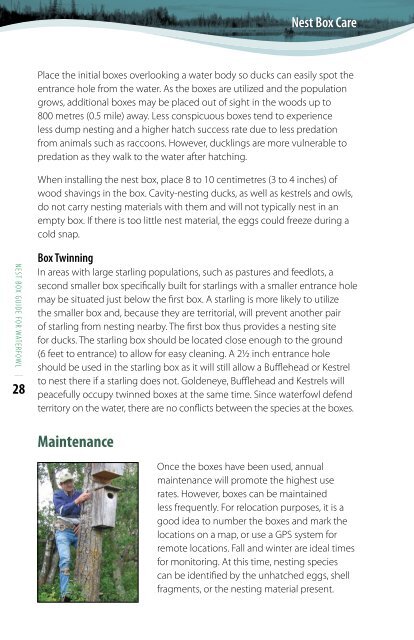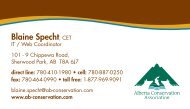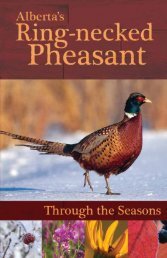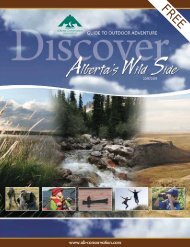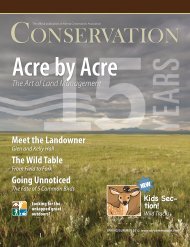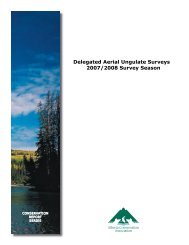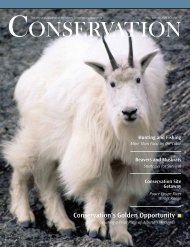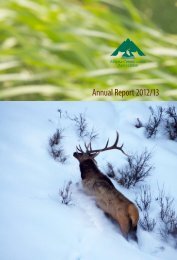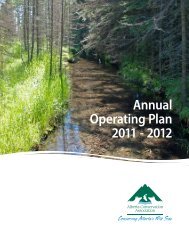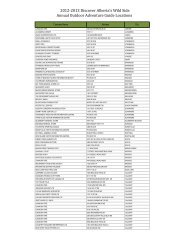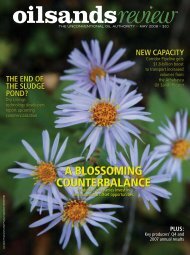Nest Box Guide For Waterfowl - Alberta Conservation Association
Nest Box Guide For Waterfowl - Alberta Conservation Association
Nest Box Guide For Waterfowl - Alberta Conservation Association
- No tags were found...
Create successful ePaper yourself
Turn your PDF publications into a flip-book with our unique Google optimized e-Paper software.
<strong>Nest</strong> <strong>Box</strong> CarePlace the initial boxes overlooking a water body so ducks can easily spot theentrance hole from the water. As the boxes are utilized and the populationgrows, additional boxes may be placed out of sight in the woods up to800 metres (0.5 mile) away. Less conspicuous boxes tend to experienceless dump nesting and a higher hatch success rate due to less predationfrom animals such as raccoons. However, ducklings are more vulnerable topredation as they walk to the water after hatching.When installing the nest box, place 8 to 10 centimetres (3 to 4 inches) ofwood shavings in the box. Cavity-nesting ducks, as well as kestrels and owls,do not carry nesting materials with them and will not typically nest in anempty box. If there is too little nest material, the eggs could freeze during acold snap.NEST BOX GUIDE FOR WATERFOWL |28<strong>Box</strong> TwinningIn areas with large starling populations, such as pastures and feedlots, asecond smaller box specifically built for starlings with a smaller entrance holemay be situated just below the first box. A starling is more likely to utilizethe smaller box and, because they are territorial, will prevent another pairof starling from nesting nearby. The first box thus provides a nesting sitefor ducks. The starling box should be located close enough to the ground(6 feet to entrance) to allow for easy cleaning. A 2½ inch entrance holeshould be used in the starling box as it will still allow a Bufflehead or Kestrelto nest there if a starling does not. Goldeneye, Bufflehead and Kestrels willpeacefully occupy twinned boxes at the same time. Since waterfowl defendterritory on the water, there are no conflicts between the species at the boxes.MaintenanceOnce the boxes have been used, annualmaintenance will promote the highest userates. However, boxes can be maintainedless frequently. <strong>For</strong> relocation purposes, it is agood idea to number the boxes and mark thelocations on a map, or use a GPS system forremote locations. Fall and winter are ideal timesfor monitoring. At this time, nesting speciescan be identified by the unhatched eggs, shellfragments, or the nesting material present.


